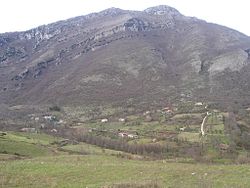
Sanza is a town and comune in the province of Salerno in the Campania region of southern Italy.

Campora is a town and comune in the province of Salerno, Campania. It is located in the territory of Cilento and as of 2009 its population was 810.
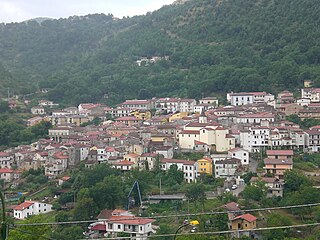
Casaletto Spartano is a town and comune in the province of Salerno in the Campania region of south-western Italy.
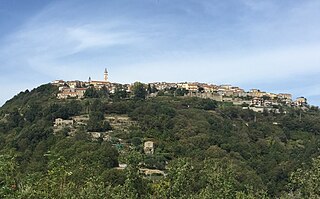
Gioi is a town and comune in the province of Salerno in the Campania region of south-western Italy. As of 2011, its population was 1,339.

Laurino is a town and comune in the province of Salerno in the Campania region of southwestern Italy.
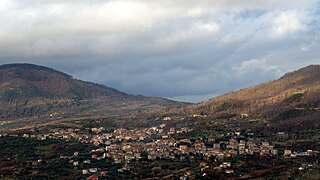
Moio della Civitella is a town and comune in the province of Salerno in the Campania region of south-western Italy.

Monte San Giacomo is a town and comune in the province of Salerno in the Campania region of south-western Italy.
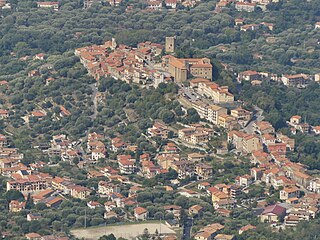
Novi Velia is a town and comune of the Province of Salerno, Campania, southern Italy. It is located in the southern Cilento area.

Ogliastro Cilento is a town and comune in the province of Salerno in the Campania region of south-western Italy. As of 2011 its population was of 2,241.
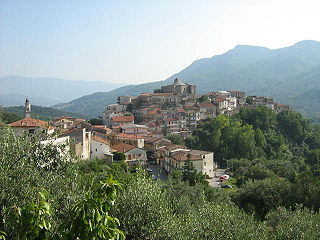
Rofrano is a town and comune of the province of Salerno in the Campania region of south-west Italy. It is located in the southern Cilento. In 2015 its population was 1,539.

Roscigno is a small town and comune in Salerno, Campania, Italy. It is located on the slope of Monte Pruno.

Sacco is a town and comune in the province of Salerno in the Campania region of south-western Italy. As of 2011, its population was 582.

San Mauro Cilento is a town and comune in the province of Salerno in the Campania region of south-western Italy.

Vallo della Lucania is a town and comune in the province of Salerno in the Campania region of south-western Italy. It lies in the middle of Cilento and its population is 8,680.

Torre Orsaia is a town and comune in the province of Salerno in the Campania region of south-western Italy.

Santa Barbara is an Italian village and hamlet (frazione) of the commune of Ceraso in the Province of Salerno, Campania. It has a population of roughly a thousand.
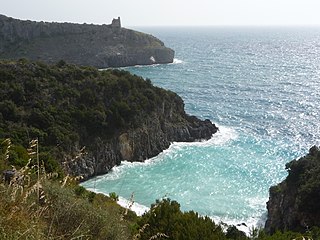
Cilento is an Italian geographical region of Campania in the central and southern part of the province of Salerno and an important tourist area of southern Italy.

Cilento, Vallo di Diano and Alburni National Park is an Italian national park in the Province of Salerno, in Campania in southern Italy. It includes much of the Cilento, the Vallo di Diano and the Monti Alburni. It was founded in 1991, and was formerly known as the Parco Nazionale del Cilento e Vallo di Diano.

The Vallo di Diano is an Italian valley of the south-eastern side of Campania, in the province of Salerno.

Gelbison is a mountain in the Lucan Subappennines range of the Apennine Mountains system, with an elevation of 1,705 metres (5,594 ft). It is located in the southern Cilento region of the Province of Salerno, in the Campania region, of southern Italy.
